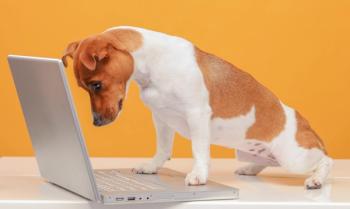
Veterinary expenditures expected to hit record high
There is an uptick in the number of people taking advantage of surgical visits.
GREENWICH, CONN. — Pet owners are willing to spend more than ever on veterinary care, projected at about $8.6 billion for 2005 during an average 2.3 annual visits for cats and 2.8 annual visits for dogs, according to the latest survey by The American Pet Products Manufacturers Association (APPMA).
Pet spending is expected to hit almost $36 billion this year, more than double its 1994 level, according to the APPMA biennial report. Pet spending was $34.4 billion in 2004. Veterinarians are seeing quite a few of those dollars via surgical visits — the highest-priced single class of expenditures for owners — which averaged $574 for dogs and $337 for cats in 2004.
Pet spending trends
"There is definitely an uptick in the number of people taking advantage of surgical visits, and I would assume there is a corresponding uptick in the types of procedures that are now made available," says Bob Vetere, COO and managing director of APPMA. "And as pet insurance becomes more available, then the flexibility on the price and the willingness to do a procedure will increase slightly."
The APPMA survey has been tracking pet insurance for its past two surveys, and though the segment has grown slower than he expected, Vetere says he expects pet insurance to spike as more middle-income owners learn about it.
"Ironically, I think the reason it hasn't taken off faster, besides the education piece, is because a lot of people who are willing to have these procedures done on their animals have the disposable income in place to do it," he says. "Pet insurance is going to be a player; it will take on more meaning for people as the human-animal bond continues to strengthen."
Immediate need
While pet health insurance might be lagging behind the human-animal bond, geriatric care and products are riding the wave of owners' affection toward their pets. The boost in surgical visits and the subsequent expenditures likely correlate to aging baby boomers taking better care of their aging pets, Vetere says. Emerging technologies and procedures are expected to be more common in the surgical suite of the near future.
Caring for a pets health, 2004
"Pets are living longer; the average age of a pet is increasing, so we are reaching a situation where our pets require more attention when they get old," Vetere says.
Likewise, geriatric products show high demand, and medications, senior vitamins, ramps for easier vehicle and pool access and the like are expected to be lucrative for manufacturers and retailers in the near term.
"The thing that was surprising to me was the strength of the bond that continue to increase between Americans and their pets," Vetere says. "Especially in the past two surveys, perhaps because of 9/11 and the events that have happened since then, people refer to their pets more and more as extended family."
Newsletter
From exam room tips to practice management insights, get trusted veterinary news delivered straight to your inbox—subscribe to dvm360.





